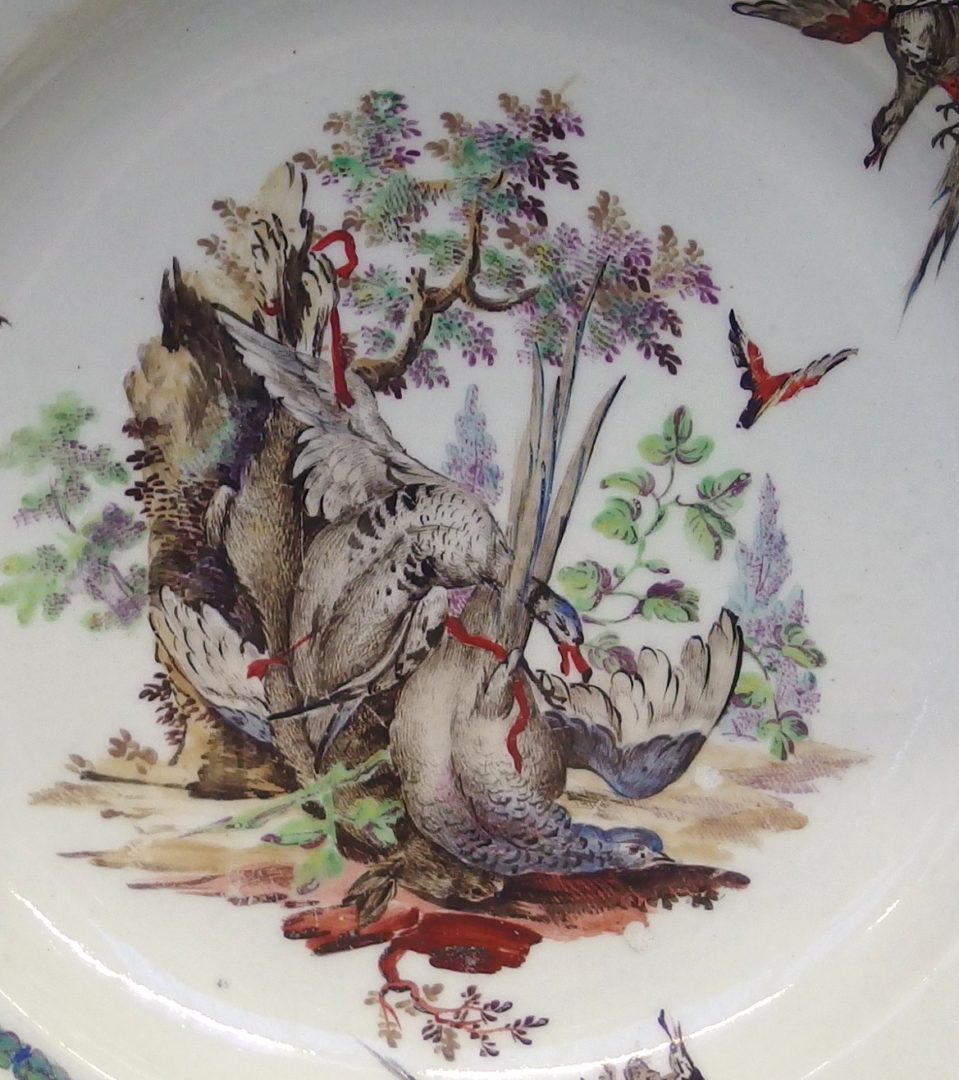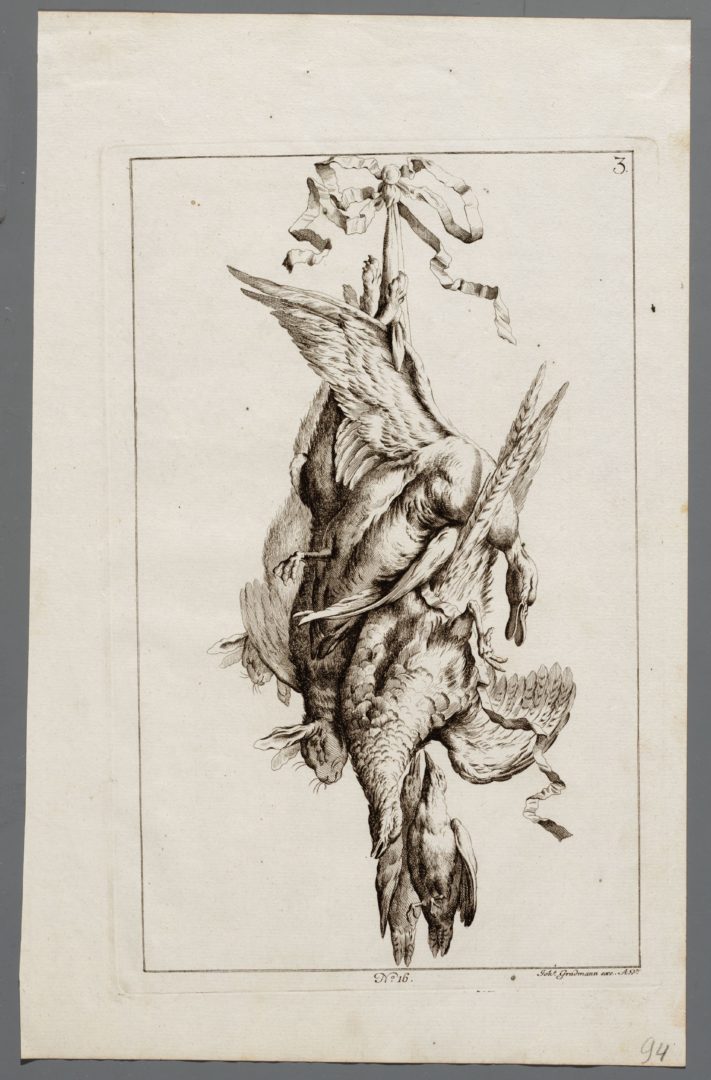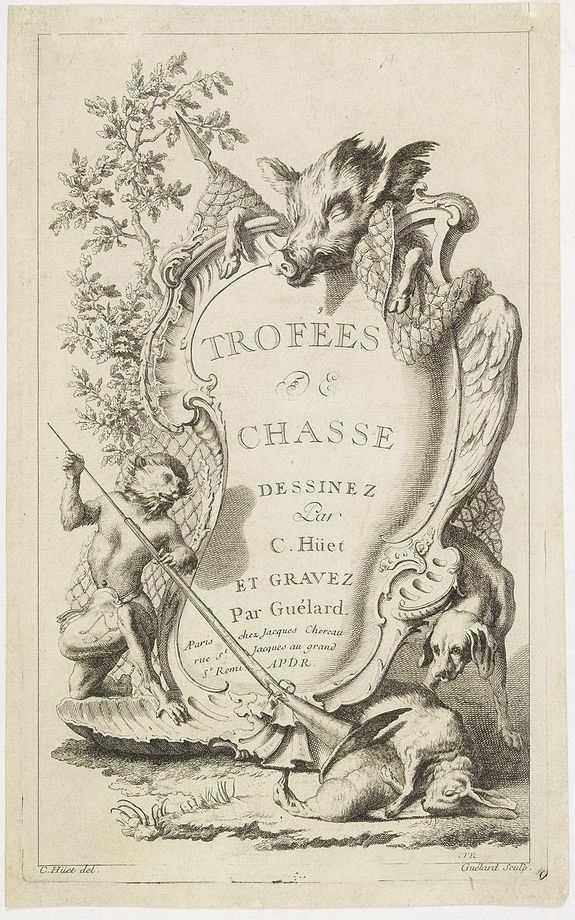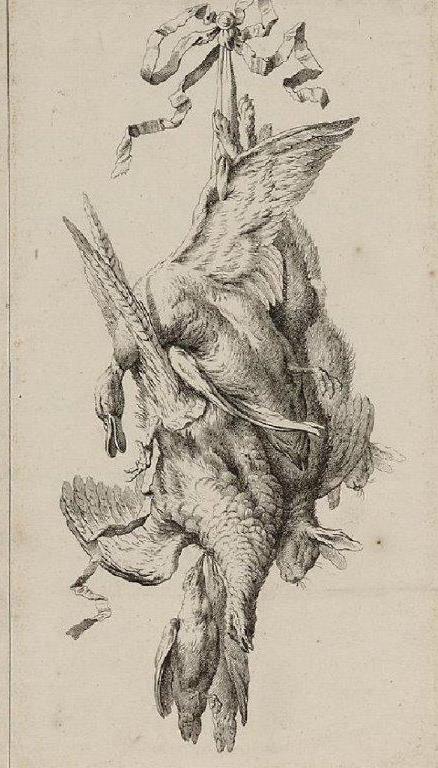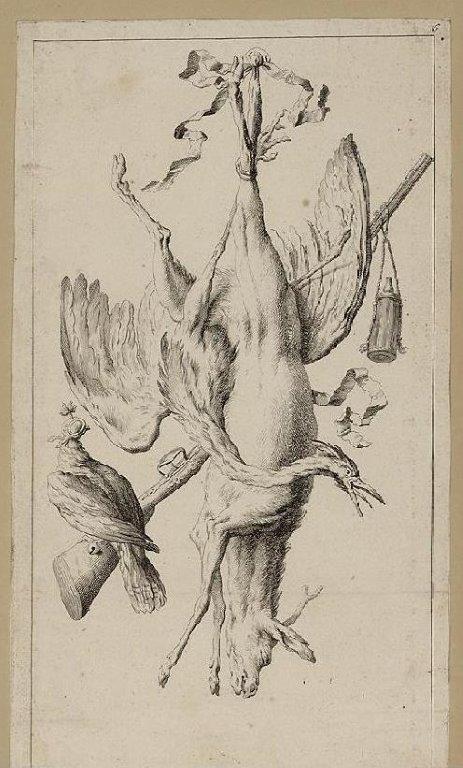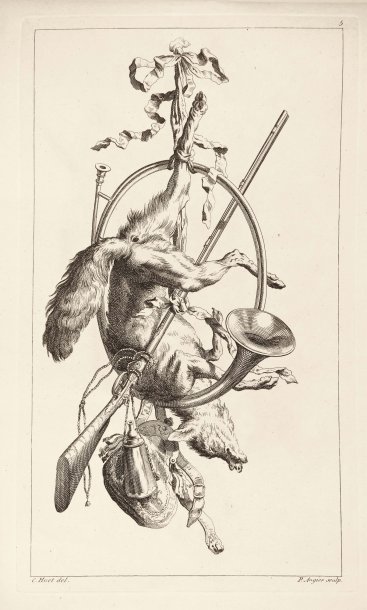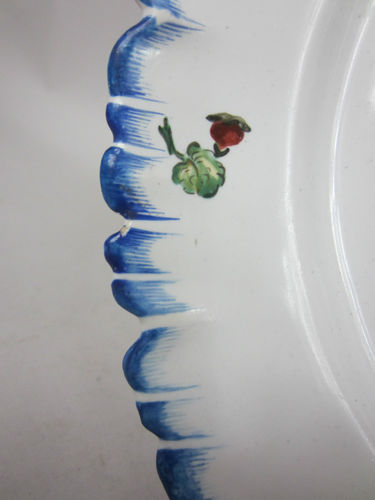1a A Worcester soft-paste porcelain plate with scalloped edge, decorated c. 1770 by Fidelle Duvivier with a scene of dead game and bordering hunting trophies after engravings by Christophe Huet. Diameter 22.5 cm. © Victoria and Albert Museum
This unusual Worcester plate was one of the four so-called “Grubbe plates” given to the Victoria and Albert Museum in 1935 by Mrs. Dora Edgell Grubbe in memory of her husband, Walter John Grubbe.(i) He was a direct descendant of James Giles, the London china retailer and owner of the leading decorating establishment, whose employees decorated a great quantity of Worcester porcelain between 1767 and 1776. Fidelle Duvivier appears to have worked for Giles as an independent decorator either prior to or during the same period that he was employed by William Duesbury of Derby (1769-1773?). With its very French-looking decoration this plate has been tentatively attributed to Duvivier in the past, but just where the decoration comes from and how it fits in place as a piece of Duvivier’s story are explained in my book.(ii)
The central decoration (1b) shows a duck, a pheasant and a hare, bound together and hung up from a low tree stump.
1b Detail of the central decoration of the plate.
2 Third print in Christophe Huet’s series Trofées de chasse published in Augsburg, 1741. © Ottema-Kingma Stichting, Leeuwarden, the Netherlands.
I discovered the print source (4) for this composition at the Gallica website of the French National Library while doing an online search for engravings that illustrated “hunting trophies.” It was one of a six-part engraved series entitled Trofées de chasse by the French engraver, Christophe Huet, dated 1741 and published in Paris. But since this engraving showed the dead game in reverse, I looked for other editions and found one published the same year in Augsburg (2), in which the arrangement of the animals was not in reverse and more closely corresponded to the painted decoration. (We see Duvivier eliminated the two smaller birds hanging lowest in the group, and he painted the hare’s and pheasant’s heads to rest on the ground).
3 Frontispiece to the series.
4
I found later editions of this series – in particular, an English one dated 1757, published by François Vivares (1709-1780), an important engraver, publisher and print-seller in London.(iii) His engraved work figured into the decoration of several other Worcester plates painted at James Giles’s workshop. Duvivier could well have used this 1757 print (identical to 2) as inspiration for the central decoration because it would have been available from Vivares, and I believe this connection strengthens the argument that he painted the plate for James Giles.
5
6
7
Moreover, Duvivier borrowed several motifs from the other engravings of the set (5, 6) for the animals and hunting objects arranged in three groups near the rim. One can recognize the falcon, powder flasks, a rifle, a hunting horn and a dagger, along with other dead game.
One other important clue points to Duvivier’s hand: on the edge of the scalloped plate we see the distinct blue combed pattern (peignes bleus), which he had often painted on Sceaux faience (7) prior to coming to England c. 1769.(iv)
NOTES
(i) These four Worcester plates can be seen at the website of the Victoria and Albert Museum, London, by entering the search term “Grubbe plates.”
(ii) See In the Footsteps of Fidelle Duvivier, pp. 50-51, 75 (notes 1-7); 90-91.
(iii) For more background on Vivares and the other Grubbe plates, see Charlotte Jacob-Hanson, “A Giles Italianate Service: Fifteen Worcester Plates Reveal a Decorative Grand Tour,” American Ceramic Circle Journal, Vol. XVII, 2013, pp. 4-47 (posted at www.academia.edu).
(iv) This detail is taken from the faience plate with Duvivier’s decoration shown on p. 25 (33a) of Footsteps.


